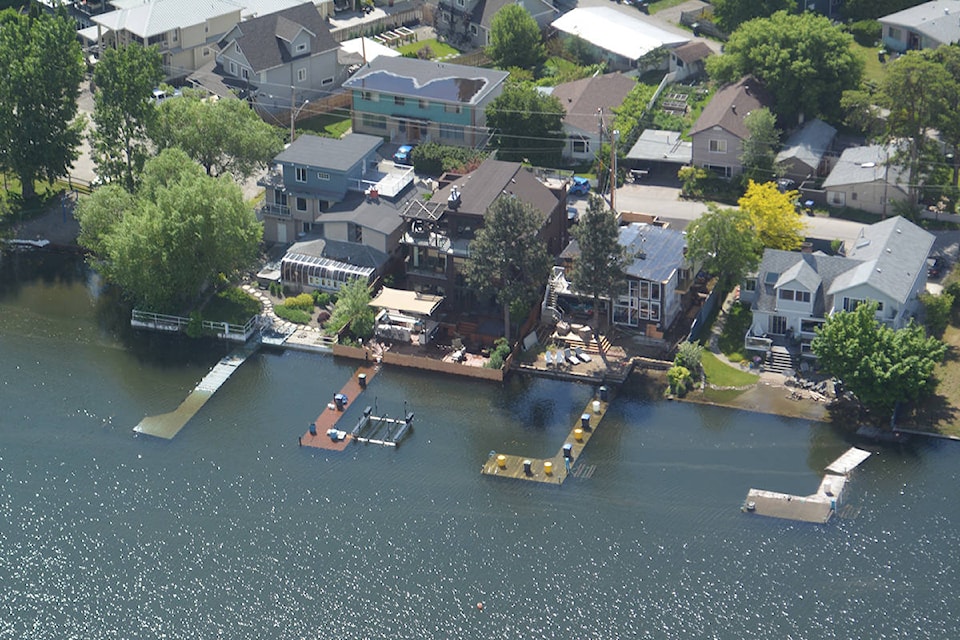By John Janmaat
It is kind of difficult to enjoy our beaches right now, on account of the high lake level. The recent flooding has damaged docks and other investments that have been made by waterfront property owners, and many have spent time, effort and money in order to minimize the damage.
The damage to docks in particular has been recognized as an opportunity by some, including our mayor and a few councillors, to look for stronger enforcement of regulations concerning structures on the foreshore. With appropriate permitting, waterfront property owners can install docks. They cannot build other structures on the foreshore. A properly constructed dock will be built to allow passage, either beginning below the high water mark, or incorporating stairs or some other means for the public to pass the dock. Many docks are not built this way.
Now that many have to be repaired or rebuilt, it does create an opportunity for inspections to take place and action taken to ensure compliance, so that those who cannot afford to own waterfront property have the opportunity to enjoy the lake that they legally have the right to enjoy.
Should we go further? Should we acquire waterfront property to convert it from private residences into beach parks? Is it worth it? What would it cost?
A number of years ago the city produced an excellent document, the Lake Okanagan Shore Zone Plan that documented many of the issues surrounding our Kelowna lake shore. Among these is the fact that riparian property owners have the right to unimpeded access to the water body on which they border. This means that the province—which owns the foreshore—cannot put up a fence or other barrier as a way to limit trespass from those using the foreshore onto private property. This contrasts with other parks, where the agency in charge often does just this as a means of protecting the rights of adjacent property owners.
Acquiring lakeshore property to convert it to public parks is expensive. At the time of the study, it was estimated that it would cost between $3,000 and $5,000 per linear foot of waterfront to acquire property for public parks. That was 20 years ago, meaning the cost will be higher today.
From 1997 to the present, residential property prices have more than tripled, while residential waterfront properties have increased in price by almost five times. This suggests the cost of acquiring lakeshore property could be as high as $25,000 per linear foot.
Herein lies the dilemma. Acquiring lakeshore is expensive, which suggests taxes will have to be increased to pay for it. The public appetite for tax increases is generally not that large, making it attractive to put off purchasing lakeshore to the future. However, the cost of lakeshore is increasing fast, meaning that the total bill for acquiring lakeshore will be larger in future.
Are we willing to pay for this? Are we willing to have the city borrow money to invest in more public beach, as we residents of Kelowna will be paying down that debt through our taxes? Are we willing to allow pockets of high density and/or resort development near the lake if in exchange the waterfront property is purchased for public use? Can we convince Victoria and Ottawa that public waterfront is important cultural infrastructure that they should help pay for?
I think these are conversations we need to have. The longer we put it off, the more expensive it is likely to get, and therefore we end up with a city where most of the greatest asset we have—the lake—is walled off behind luxury properties that only the wealthiest among us can afford to live in.
John Janmaat is an associate professor of economics and RIC chair in water resources and ecosystem sustainability economics at the I.K. Barber School of Arts and Sciences at UBC Okanagan.

